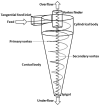The Impurity Removal and Comprehensive Utilization of Phosphogypsum: A Review
- PMID: 38730874
- PMCID: PMC11084927
- DOI: 10.3390/ma17092067
The Impurity Removal and Comprehensive Utilization of Phosphogypsum: A Review
Erratum in
-
Correction: Guan et al. The Impurity Removal and Comprehensive Utilization of Phosphogypsum: A Review. Materials 2024, 17, 2067.Materials (Basel). 2024 Nov 15;17(22):5574. doi: 10.3390/ma17225574. Materials (Basel). 2024. PMID: 39597501 Free PMC article.
Abstract
Phosphogypsum (PG), a byproduct during the phosphoric acid production process, also known as the wet process, contains complex and diverse impurities, resulting in low utilization and considerable accumulation. This leads to a massive waste of land resources and a series of environmental pollution problems. Given the current urgent ecological and environmental situation, developing impurity removal processes with low energy consumption and high efficiency, exploring valuable resource recovery, preparing high value-added PG products, and broadening the comprehensive utilization ways of PG are significant strategies to promote the sustainable consumption of PG and sustainable development of the phosphorus chemical industry. This review comprehensively summarizes the advantages and disadvantages of existing PG impurity removal and utilization technologies and probes into the future development direction, which provides references and ideas for subsequent PG research.
Keywords: impurity removal; phosphogypsum; rare earth elements; utilization.
Conflict of interest statement
The authors declare no conflict of interest.
Figures











References
-
- Calderón-Morales B.R.S., García-Martínez A., Pineda P., García-Tenório R. Valorization of phosphogypsum in cement-based materials: Limits and potential in eco-efficient construction. J. Build. Eng. 2021;44:102506. doi: 10.1016/j.jobe.2021.102506. - DOI
-
- Hammas-Nasri I., Horchani-Naifer K., Férid M., Barca D. Production of a rare earths concentrate after phosphogypsum treatment with dietary NaCl and Na2CO3 solutions. Miner. Eng. 2019;132:169–174. doi: 10.1016/j.mineng.2018.12.013. - DOI
-
- Meesschaert B., Monballiu A., Ghyselbrecht K., Van Goethem C., Halleux H., Pinoy L. Pilot scale recovery of phosphorus as calcium phosphate from nitrified UASB effluent of a potato processor and subsequent reuse in the wet process for phosphoric acid production. J. Environ. Chem. Eng. 2020;8:104593. doi: 10.1016/j.jece.2020.104593. - DOI
Publication types
Grants and funding
LinkOut - more resources
Full Text Sources

